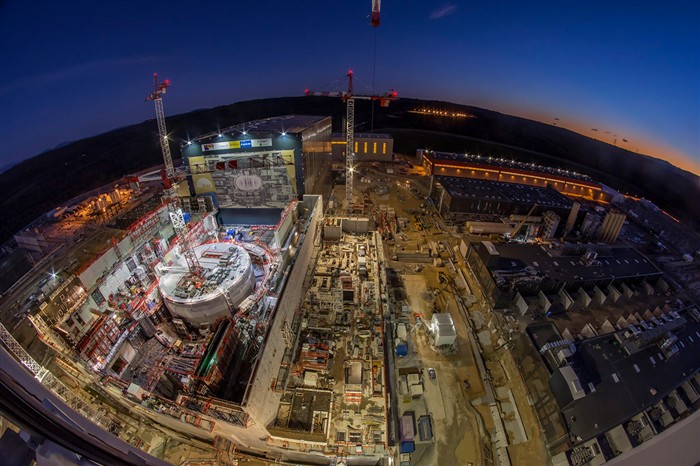A Simple Solution for Complex Capital Projects
Companies know capital projects often cost more and take longer than expected[1]. These problems are recognized industry-wide and significant.
An increasing number of projects are delivered behind schedule, beyond the cost estimate, and fail to meet expectations[2]. Unbelievably, 98% of megaprojects suffer cost overruns and 77% are late[3]!
Every project is at risk for budget and schedule overruns – and the bigger the project, the bigger the risk[4].
Improvement is Needed
The Institution of Civil Engineers (ICE) report A Systems Approach to Infrastructure Delivery explains how systems thinking improves the delivery of complex infrastructure projects.
System thinking or systems thinking enables personnel to view systems from a broad perspective that includes seeing overall cycles, patterns, and structures in systems, rather than specific events only. This approach quickly identifies the real causes of an organization’s challenges, and the remedies needed to address them and improve performance. System thinking is beneficial for personnel who are surrounded by increasingly complex and interrelated systems that manage processes, products, and projects.
Undoubtedly, complex projects require complex solutions like system thinking but no solution is a panacea (silver bullet) for pervasive project management challenges. So, what is missing?
Occam’s Razor
Occam’s Razor states: the simplest solution is most likely the best or correct solution. This has two implications for all projects:
- The Pareto Principle or 80/20 rule states: for many events, roughly 80% of the effects come from 20% of the causes. This means that low-hanging fruit must be picked first: miscommunication and misunderstanding; and,
- Complex project delivery methods such as a systems approach to infrastructure delivery (SAID) will be more successful with improved communication and increased understanding. This is especially true whenever new methods and systems are introduced from other industries.
Miscommunication and misunderstanding contribute to costly project challenges. This is because industry lacks a common language; companies use their own terminology – which can be very confusing[5]. Ineffective communication puts 7.5% of project budgets at risk – that’s $75 M for every $1 B[6]! Significant.
A Simple Solution
Is there a simple solution that fosters system thinking, improved communication, and increased understanding? Yes!
A project can greatly reduce the risk of ineffective communication by making a glossary the single authority for defining company, industry, and project terminology. A modern, up‑to‑date, and well-written glossary provides precise definitions for phrases and terms that everyone understands.
Implementing a glossary has major benefits, including:
- Improved client satisfaction and team morale;
- Improved on-boarding and communication;
- Improved quality and reputation;
- Increased profits (by saving money and time); and,
- Increased understanding.
The signature KT Project guideline is the Glossary of Common Industry and Project Terminology, which defines thousands of current phrases and terms. At almost 600 pages, it is the first comprehensive terminology resource written specifically for capital projects in energy, industrial, mining, petrochemical, pipeline, power, and other sectors.
Read More
To learn more about effective communication and project success, read this KT Project eBook:
Successful Projects Need Effective Communication – Tackling a complex challenge with a simple solution.
Note
This article was published by the Oilman Magazine 21-Jan-21 https://oilmanmagazine.com/a-simple-solution-for-complex-capital-projects/ and EnergyNow 17-May-21 https://energynow.ca/2021/05/a-simple-solution-for-complex-capital-projects-roy-o-christensen/.
About the Author
Roy O. Christensen founded KT Project to save organizations significant money and time by providing key resources to leverage expert knowledge transfer for successful project execution. Contact Roy to learn more about this useful resource:
+1 403 703-2686
Figures
- ITER Construction Site 2018 in Cadarache, France. https://fusionforenergy.europa.eu/news/a-new-dawn-rises-on-the-iter-construction-site/
References
- Pricewaterhouse Coopers. Successful Capital Project Delivery. https://www.pwc.com/gx/en/industries/assets/pwc-successful-capital-projects.pdf
- Institution of Civil Engineers. A Systems Approach to Infrastructure Delivery. https://www.ice.org.uk/getattachment/knowledge-and-resources/briefing-sheet/a-systems-approach-to-infrastructure-delivery/ICE_Systems_Report_final.pdf.aspx
- McKinsey & Company. The Construction Productivity Imperative. https://www.mckinsey.com/business-functions/operations/our-insights/the-construction-productivity-imperative
- KT Project. The Key to Project Success? It’s All In How You Start!. https://ktproject.ca/wp-content/uploads/2020/05/KT-Project-eBook-01-The-Key-to-Project-Success.pdf
- Construction Industry Institute. Achieving Zero Rework Through Effective Supplier Quality Practices. https://www.construction-institute.org/resources/knowledgebase/best-practices/quality-management/topics/rt-308/pubs/rs308-1
- Project Management Institute. The High Cost of Low Performance: The Essential Role of Communications. https://www.pmi.org/-/media/pmi/documents/public/pdf/learning/thought-leadership/pulse/the-essential-role-of-communications.pdf

